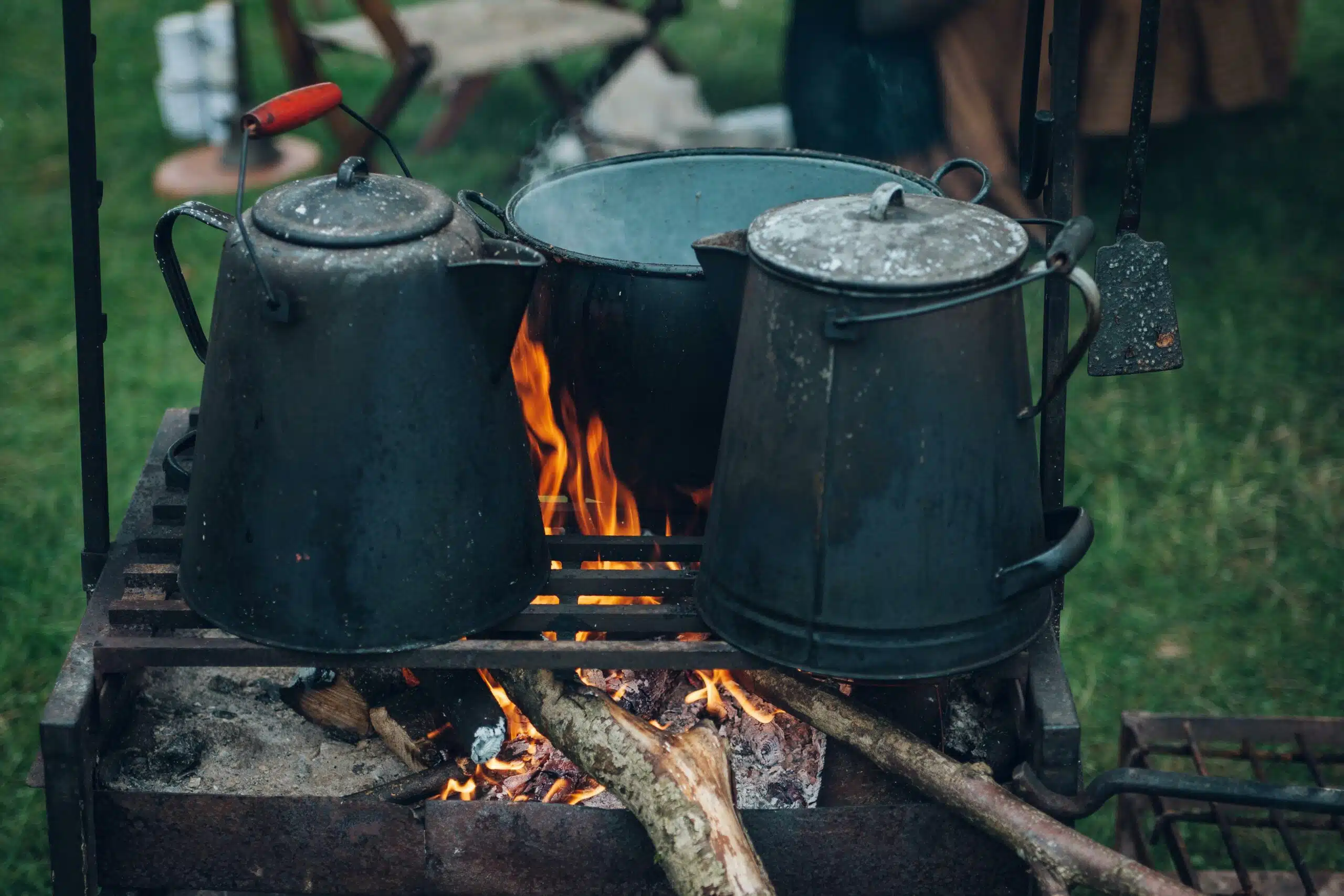Are you tired of seeing that white, chalky residue inside your kettle? This buildup, known as limescale, is a common issue, especially in areas with hard water. Limescale not only affects the taste of your beverages but can also reduce the efficiency of your kettle. In this article, we’ll explore the best methods for removing limescale buildup and maintaining your kettle for long-lasting performance.
Descaling Your Kettle: A Step-by-Step Guide
Step 1: Gather Your Supplies
To effectively remove calcium buildup, you’ll need:
- White vinegar
- Water
- Lemon juice (optional)
- A soft cloth or non-abrasive sponge
Step 2: Prepare the Descaling Solution
Fill your kettle with water and white vinegar in equal parts. If your kettle has a significant buildup, you can add a few drops of lemon juice to enhance the solution’s effectiveness.
Step 3: Boil the Solution
Bring the water and vinegar mixture to a boil. Let it continue boiling for a few minutes to ensure the solution penetrates all the limescale deposits. After boiling, turn off the kettle and let the solution sit for about 20 minutes.
Step 4: Scrub the Interior
After the solution has cooled, use a non-abrasive sponge or cloth to scrub the inside of the kettle gently. This should help remove any remaining limescale. For stubborn deposits, you may need to repeat the boiling and scrubbing process.
Step 5: Rinse Thoroughly
Empty the kettle and rinse it several times with clean water to ensure all vinegar residue is removed. This step is crucial to prevent any vinegar taste in your next cup of tea.
Best Methods for Removing Limescale Buildup (Calcium)
Method 1: White Vinegar
White vinegar is a powerful and natural descaling agent. Its acidity helps dissolve calcium carbonate, the main component of limescale. This method is effective and safe for most types of kettles, including stainless steel and electric kettles.
Method 2: Lemon Juice
Lemon juice is another excellent natural descaler. Its citric acid works similarly to vinegar but leaves a pleasant scent. You can use lemon juice alone or mix it with vinegar for an extra boost.
Method 3: Baking Soda
Baking soda is a gentle abrasive that can help scrub away limescale. Create a paste with baking soda and water, apply it to the limescale areas, and scrub with a soft cloth.
Method 4: Commercial Descaling Solutions
If you prefer ready-made solutions, several commercial descaling products are available. These products are specifically formulated to remove limescale and are safe for use in kettles. Always follow the manufacturer’s instructions when using these products.
The Dangers of Ignoring Kettle Descaling

Reduced Efficiency
Limescale buildup can affect the heating element in your kettle, causing it to take longer to boil water. This increased energy usage can raise your electricity bills and reduce the lifespan of your kettle.
Poor Taste
Limescale can impart a metallic taste to your water, affecting the flavor of your tea or coffee. Regular descaling ensures your beverages taste fresh and clean.
Health Concerns
While limescale itself is not harmful, it can harbor bacteria if not regularly cleaned. Ensuring your kettle is free from buildup helps maintain a hygienic environment for boiling water.
Maintaining Your Kettle: Tips for Long-Lasting Performance

Regular Cleaning
To prevent limescale buildup, make it a habit to clean your kettle regularly. After each use, empty any remaining water and rinse the kettle. This practice helps reduce the minerals left behind as the water evaporates.
Use Filtered Water
Using filtered water can significantly reduce the amount of calcium and other minerals that cause limescale. This simple step can help extend the time between descaling sessions.
Dry the Kettle
After cleaning, make sure to dry the inside of your kettle thoroughly. Leaving it wet can encourage mineral deposits to form.
Olive Oil Trick
To keep the exterior of your stainless steel kettle looking shiny, you can rub a small amount of olive oil on it. This helps prevent water spots and keeps your kettle looking new.
Regular Descaling
Even with preventive measures, it’s essential to descale your kettle regularly. Aim to descale every 4-6 weeks, depending on the hardness of your water.
Check the Heating Element
Periodically inspect the heating element for signs of limescale buildup. Keeping the element clean ensures your kettle operates efficiently.
Store Properly
When not in use, store your kettle with the lid open. This allows any residual moisture to evaporate, reducing the chances of limescale forming.
By following these steps and tips, you can keep your kettle in excellent condition, ensuring it provides you with clean, great-tasting water for years to come. Regular maintenance not only enhances performance but also extends the lifespan of your appliance. Happy brewing!
Ready to Relax in a Clean Home?
If you found this guide helpful, please share it with your friends and family. For more tips on maintaining a clean and healthy home, check out our other blog posts or contact Home Style Cleaning for professional cleaning services tailored to your needs. We are here to help keep your home spotless and comfortable.
3-Step Process for Easy Kettle Maintenance
- 1
Regular Rinsing: Empty and rinse your kettle after each use.
- 2
Monthly Descaling: Use vinegar or lemon juice to descale your kettle monthly.
- 3
Drying and Storage: Dry your kettle thoroughly and store it with the lid open.







Leave a Reply